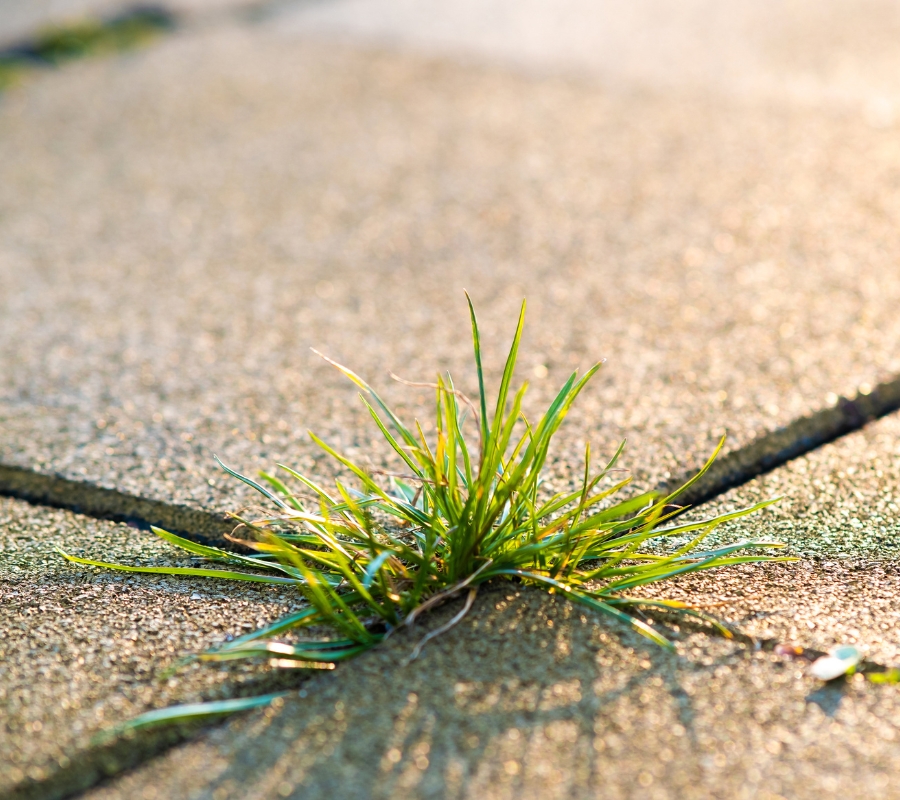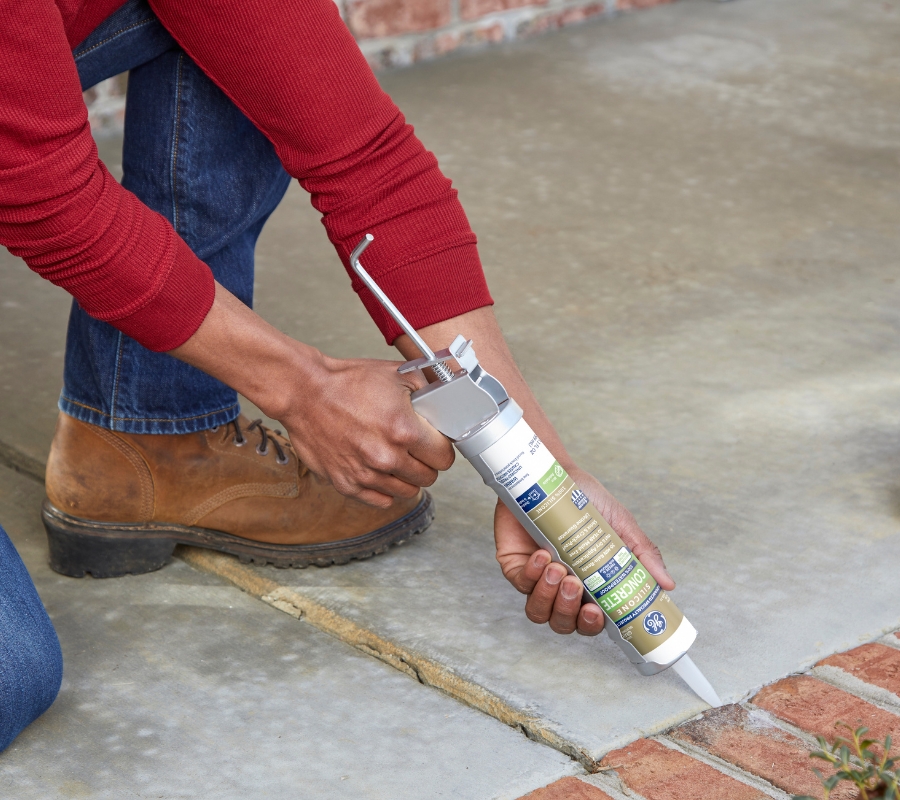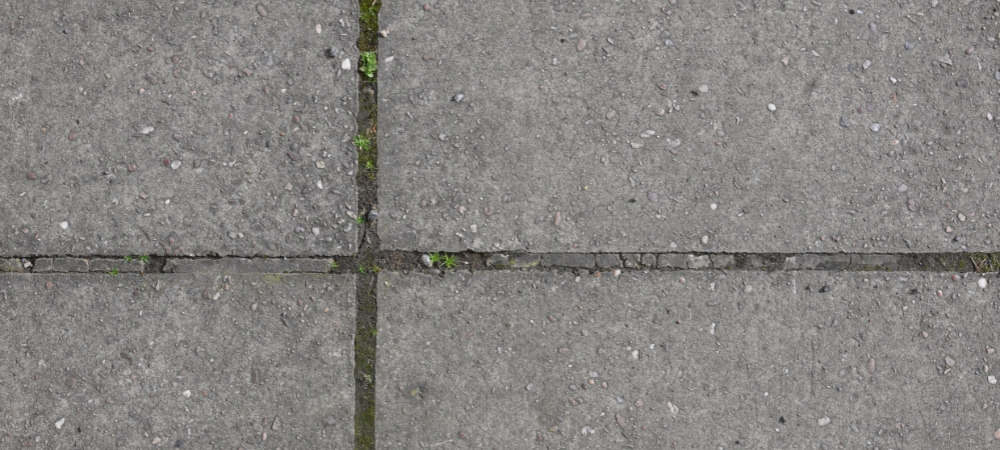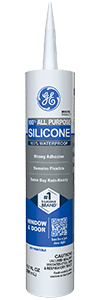Note: This DIY article is provided as a general guide only and is not intended to take the place of product-specific installation procedures; always follow applicable manufacturers’ instructions. Depending on your home’s age and condition, location within the home, and other potential factors, repairs and/or upgrades or other services may be necessary prior to the beginning and/or completion of your project that may involve the services of a home improvement professional. This article does not include advice pertaining to local building codes and/or any related inspections.
Outdoor tile, stone, and concrete pavers enhance the beauty of patios, walkways, and pool decks, but they require proper maintenance to remain in top condition. Over time, gaps and cracks can form, leading to water damage, weed growth, and structural shifting. In this article, you’ll learn how to prevent these issues and seal outdoor tile and pavers using a 100% silicone sealant.
The best outdoor tile sealant for gaps and cracks is a flexible, waterproof sealant for long-lasting protection.

Why seal outdoor tile and pavers?
Outdoor tile and pavers are constantly exposed to the elements, including rain, snow, and temperature fluctuations. Without proper sealing, gaps and cracks can develop, leading to serious issues such as:
- Water damage: Unsealed cracks allow water to seep beneath the surface, causing erosion and weakening the foundation.
- Weed growth: Moisture trapped in gaps creates an ideal environment for growing weeds and grass, making maintenance more challenging.
- Shifting and uneven surfaces: Water infiltration can lead to ground movement, causing tiles and pavers to move or become uneven over time.
- Mold and mildew: Persistent moisture in cracks can promote mold and mildew growth, creating an unsightly and potentially slippery surface.
Choosing the best outdoor tile sealant
When sealing outdoor tile pavers, using the right product for the job is essential. Unlike topical sealers that coat the entire surface, the best outdoor tile sealant for expansion joints, gaps, and cracks is a flexible, waterproof sealant designed for long-lasting protection. A 100% silicone sealant is an excellent choice because:
- It’s completely waterproof: Silicone sealant repels water, preventing seepage into cracks and gaps.
- It remains flexible: Unlike rigid fillers, silicone expands and contracts with temperature changes, preventing future cracks.
- It’s weatherproof: Silicone sealant is resistant to UV rays, extreme temperatures, and moisture and maintains its effectiveness year-round.
- It adheres to concrete, stone, and mortar: Dedicated concrete sealants are perfect for sealing joints in outdoor tile, natural stone, and concrete pavers.
- It’s long-lasting and durable: High-quality silicone sealants can provide years of reliable protection with minimal maintenance.
Step-by-step guide to sealing gaps and cracks in outdoor tile and pavers
Sealing the gaps and cracks in your outdoor tile, stone, or pavers is a straightforward process that enhances durability and prevents costly damage. Using the right silicone sealant and following proper application techniques ensures your outdoor spaces remain well-protected against water infiltration, shifting, and weed growth. Below is a step-by-step guide to help you achieve long-lasting results.
Step 1: Inspect and clean the surface
Before sealing, thoroughly inspect your outdoor tile or pavers for any visible gaps, cracks, or joints that need attention. Use a brush or leaf blower to remove dirt, debris, and loose materials from the affected areas. For deeper cracks, consider using a vacuum or pressure washer to ensure a clean surface for proper adhesion.
Step 2: Remove existing failing sealant (if necessary)
If there is old or deteriorated sealant in the gaps, remove it using a scraper or sealant removal tool. This will allow the new silicone sealant to bond properly with the surface. Clean any residue left behind to create a fresh application area.
Step 3: Apply the silicone sealant
For this step, you will want to use a high-quality silicone sealant designed for concrete, mortar, and stone. Our Concrete Silicone 2 Sealant is ideal for projects like this. Then, apply the sealant to the cracks and gaps between your outdoor tile or pavers. Be sure to:
- Cut the nozzle at an angle to match the width of the gap.
- Apply steady pressure while dispensing the sealant to ensure an even fill.
- Work in small sections to maintain control and precision.
- Smooth the sealant with a smoothing tool or gloved finger for a neat finish and better adhesion. This also helps create a watertight seal, preventing future cracking or gaps from forming.
Step 4: Allow for proper curing
Silicone sealants require time to cure fully. Curing times can vary depending on the product and weather conditions. Our concrete sealant is rain-ready in 30 minutes, meaning you don’t have to worry about keeping surfaces dry for hours or days. Avoid stepping on or disturbing the sealed areas while giving the concrete sealant time to cure.

Step 5: Perform regular maintenance
Maintenance is required to keep outdoor tile and pavers in excellent condition. Be sure to:
- Inspect the sealed joints periodically for signs of wear or damage.
- Reapply sealant as needed to maintain a watertight seal and prevent deterioration.
- Clean the surface regularly to remove dirt and avoid buildup, ensuring the longevity of your sealed areas.
Common mistakes to avoid when sealing outdoor tile and pavers
To ensure a successful sealing process, avoid these common mistakes:
- Using the wrong product: Coating sealers are not designed for sealing cracks and gaps. Always use silicone-based outdoor tile sealant for this purpose.
- Skipping surface preparation: Failing to clean the area properly can result in poor adhesion and premature sealant failure.
- Applying sealant in poor weather conditions: Extreme temperatures or wet conditions can affect curing and bonding. Choose a dry day with moderate temperatures for the best results.
- Not smoothing the sealant: Leaving excess sealant or uneven application can affect the final appearance and performance.
FAQs
How often should I reapply sealant to my outdoor tile or pavers?
The lifespan of silicone sealant varies based on exposure and usage, but it typically lasts several years. Inspect sealed areas annually and reapply as needed.
Can I use silicone sealant on natural stone?
Yes, 100% silicone sealant adheres well to natural stone, providing a flexible, waterproof seal without damaging the surface.
Will silicone prevent weed growth?
Yes, properly sealing cracks with silicone prevents moisture buildup, making it harder for weeds to take root beneath the surface.
Does the sealant change the appearance of outdoor tile or pavers?
No, silicone sealant is designed to seal gaps without altering the appearance of the surrounding material.
Maintaining and sealing your outdoor tile and pavers is essential for longevity, aesthetics, and safety. Sealing cracks and joints effectively with a high-quality 100% silicone sealant helps prevent water damage, weed growth, and shifting.
To find the perfect sealant for your project, visit a store near you in the US or Canada.


